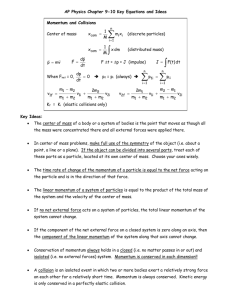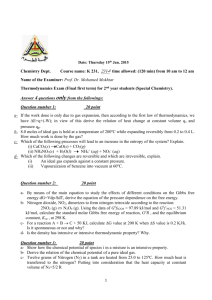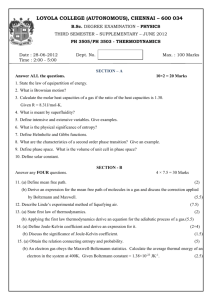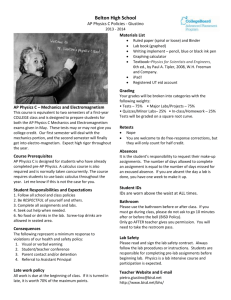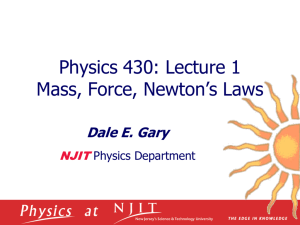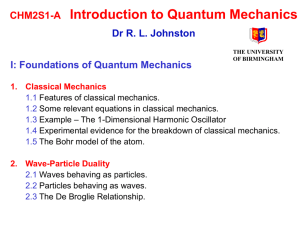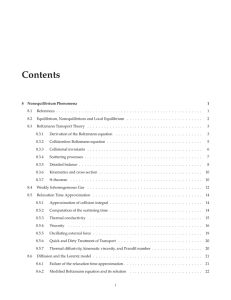Physics 504: Statistical Mechanics and Kinetic Theory HOMEWORK
advertisement
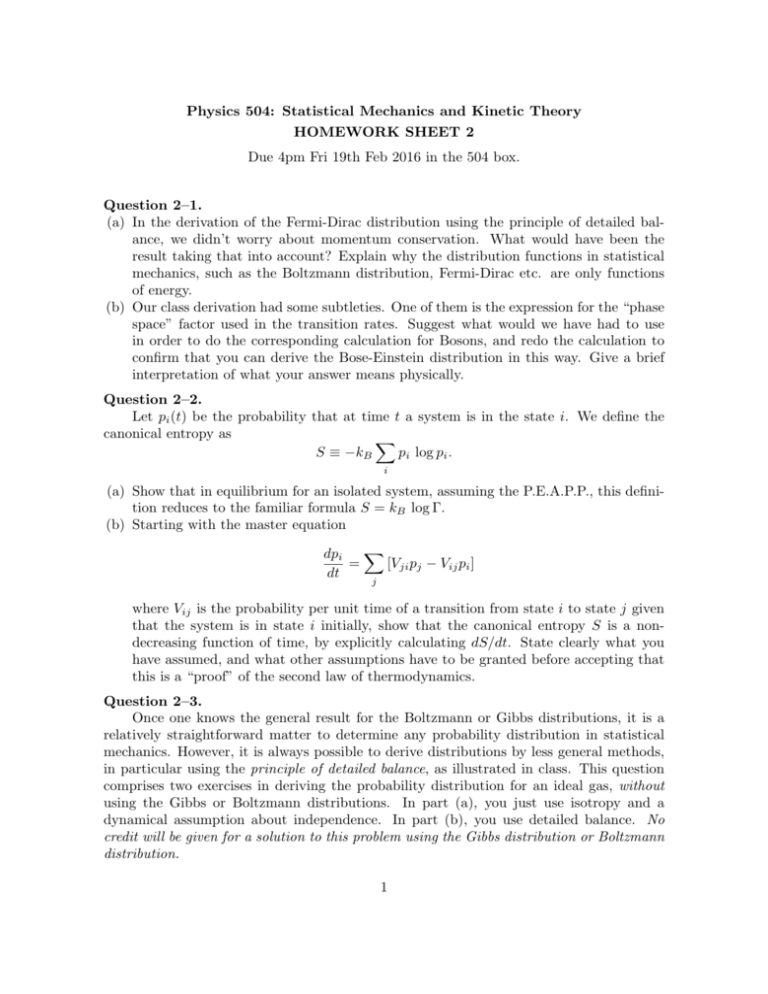
Physics 504: Statistical Mechanics and Kinetic Theory HOMEWORK SHEET 2 Due 4pm Fri 19th Feb 2016 in the 504 box. Question 2–1. (a) In the derivation of the Fermi-Dirac distribution using the principle of detailed balance, we didn’t worry about momentum conservation. What would have been the result taking that into account? Explain why the distribution functions in statistical mechanics, such as the Boltzmann distribution, Fermi-Dirac etc. are only functions of energy. (b) Our class derivation had some subtleties. One of them is the expression for the “phase space” factor used in the transition rates. Suggest what would we have had to use in order to do the corresponding calculation for Bosons, and redo the calculation to confirm that you can derive the Bose-Einstein distribution in this way. Give a brief interpretation of what your answer means physically. Question 2–2. Let pi (t) be the probability that at time t a system is in the state i. We define the canonical entropy as X S ≡ −kB pi log pi . i (a) Show that in equilibrium for an isolated system, assuming the P.E.A.P.P., this definition reduces to the familiar formula S = kB log Γ. (b) Starting with the master equation X dpi = [Vji pj − Vij pi ] dt j where Vij is the probability per unit time of a transition from state i to state j given that the system is in state i initially, show that the canonical entropy S is a nondecreasing function of time, by explicitly calculating dS/dt. State clearly what you have assumed, and what other assumptions have to be granted before accepting that this is a “proof” of the second law of thermodynamics. Question 2–3. Once one knows the general result for the Boltzmann or Gibbs distributions, it is a relatively straightforward matter to determine any probability distribution in statistical mechanics. However, it is always possible to derive distributions by less general methods, in particular using the principle of detailed balance, as illustrated in class. This question comprises two exercises in deriving the probability distribution for an ideal gas, without using the Gibbs or Boltzmann distributions. In part (a), you just use isotropy and a dynamical assumption about independence. In part (b), you use detailed balance. No credit will be given for a solution to this problem using the Gibbs distribution or Boltzmann distribution. 1 Consider a classical ideal gas of N particles in three dimensions, and let F (c) d3 c be the probability that a particle has velocity in the range c to c + d3 c. Write c = (u, v, w), and let f be the probability distribution for (e.g.) u, the x-component of the velocity. (a) Using only the isotropy of space and the assumption that the velocity components are independent, derive a functional equation relating f and F . Solve this equation and hence derive the form of f . Determine any unknown constants in your answer by using the result that the average energy in thermal equilibrium is hEi = 3N kB T /2 (this can be derived from kinetic theory too, without using the Gibbs distribution). (b) Suppose that the same gas comes into equilibrium through 2-body interactions only. In the following, treat the interactions from the point of view of quantum mechanics, but ignore any special phase space effects due to quantum statistics. By using the Principle of Detailed Balance, show that f2 (p1 , p2 ) = f2 (p3 , p4 ) where f2 (p1 , p2 )d3 p1 d3 p2 is the joint probability that particle 1 has momentum in a small shell around p1 and particle 2 has momentum in a small shell around p2 . Discuss whether or not this result would necessarily follow if the details of the interactions were described by classical mechanics. (c) Make the hypothesis that the particles are uncorrelated before the collision, and say what this means in terms of the single particle distribution function for the momentum f1 (p)d3 p, which is the probability that a particle has momentum in a small shell around p. Comment on the correctness of this hypothesis. (d) Using this hypothesis, and the result of your considerations on the Principle of Detailed Balance, derive, once again, the Maxwell distribution of velocities (momenta, if you prefer). 2



